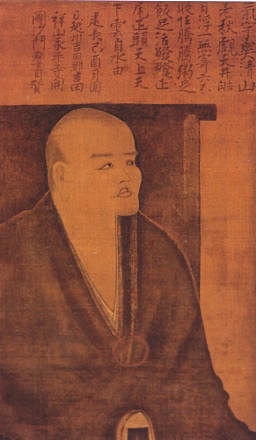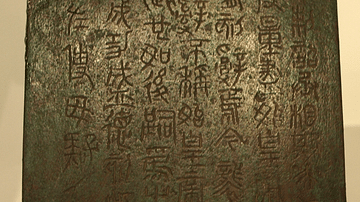The concept of Oneness is expressed repeatedly in philosophical works both in the east and west. Whether one is reading the Paradoxes of Zeno of Elea (l. c. 465 BCE) or the treatises of Wonyho (l. 617-686 CE) the concept of the One is impossible to ignore.
Great religious reformers of the past like Buddha and Jesus have also pointed to the concept of the One in their teachings; Buddha through his Eight-Fold Path to Enlightenment through right behavior (which shuns the concept of labels), and Jesus through his Sermon on the Mount where people are encouraged to recognize God first, and all other aspects of their lives will then fall into place.
The concept of the One
It is very interesting, therefore, to note that no matter how many great thinkers have taught and written on this concept, just as many philosophical schools have rejected it. This division between those who recognize the One and emphasize simplicity and those who reject the concept and stress the importance of many details is exemplified in the vision of the Japanese philosopher Dogen (l. 1200-1253 CE) and the school of thought known as Neo-Confucianism which developed in China (c. 618-907 CE, during the Tang Dynasty).
Dogen lived and studied in China for five years and was a Buddhist and Zen Master whose simplicity of life and thought contrasts sharply with that of the Chinese Confucian and literary giant Han Yu (l. 768-824 CE) who rejected Buddhism as a disruptive influence. Neo-Confucian thought emphasizes the importance of 'patterns' which one must recognize in order to live correctly. Dogen's view encourages people to first recognize the essential oneness of all in order to see clearly that the only 'pattern' in the universe is that there is no pattern.
Dogen's views can be encapsulated in his concept of the "one bright pearl". The one bright pearl in Dogen's philosophy refers to the wholeness of the universe. There is no need to pry into the "mysteries" of the universe in order to understand it. A human being exists simply to bear witness to the one bright pearl which is the universe because that human being is also that very one bright pearl. All is one and there is no differentiation between the observer and the observed, between the participant and that which is participated in.
Identities & change
Dogen states that, "One bright pearl is able to express Reality without naming it" (Waddell, 34) meaning that, since one must designate an object in order to discuss it, one uses the phrase "one bright pearl" to refer to the totality of the universe and existence but that does not mean that the universe and existence is, in fact, an actual pearl. Dogen is saying that, like a pearl, the universe is a whole; it is one. As he says, "All the universe is an unceasing process, pursuing things and making them the self, pursuing the self and making things" (Waddell, 33) and this exemplifies the unity of existence which "is not vast and large, not minute and small, or square or round" (Waddell, 33) and, certainly, is not an actual pearl. To consider the universe a pearl would be to name, and thus limit, what the universe actually is - and that simply cannot be done. Humans are limited by their subjective existence and name various aspects of life according to their understanding but this does not mean those labels are accurate.
To definitively name something and call it by that name is useless, Dogen claims, and leads to a wrong understanding of what that object or person or concept actually is. This situation is exemplified in the story Dogen tells of Li Ao asking Yueh-Shan his name and the latter answering, "Right Now" (Waddell, 35). Li Ao asks for clarification of another person's name, but Yueh-Shan understands that such information cannot be given properly the way the question is being asked.
Li Ao is asking, "Who are you?" and expects a response which will then provide him with understanding regarding who Yueh-Shan is. When Yueh-Shan answers that his name is "Right Now" he means that his identity is that which it is at the present moment; it has no permanent form but is in a state of perpetual change, just as the universe which enfolds him is, and so he can give no better answer than to say that he is only what he is in the present moment.
I & an Other
The difference between Dogen's "one bright pearl" and the Neo-Confucian concept of Pattern is that the Neo-Confucian model holds that humanity is innately good and that human responses to the world have their basis in this inherent goodness. One must only recognize the pattern and link that pattern to one's action in order to live a good and moral life. The concept of the pattern - and a response to that pattern (recognition of it and acting upon that recognition) introduces duality to the universe and human existence because now there is a participant and something which needs to be participated in.
Naturally, according to this view, there is an "I" and an "Other" which have a certain relationship. In Dogen's view, however, there is no "I" and there is no "Other" to be considered; there is only one bright pearl which encompasses both the people observing and that which is being observed. The insistence upon a pattern which one must strive to recognize and live by, in Dogen's view, only obscures one's vision of truth and makes it that much more difficult to actually live one's life with clarity and purpose.
By removing artificial labels, one frees one's self from the illusion of isolation and "otherness" in one's life. Dogen notes how a recognition of the One as encompassing the All draws each individual into a collective whole. This recognition then encourages a higher understanding, as well as better behavior, than an existence based on self-interest in which one puts one's own desires and goals before those of others.
If one truly understood what was best for one's self, Dogen claims, one would recognize that embracing the vision of the One liberates the individual to become truly human and in touch with the actual reality of existence instead of the artificial world one creates by maintaining a self-centered value system which distorts that reality. The One, then, is the path to truth and understanding and, in keeping with Dogen's personal lifestyle, is the path of simplicity. One need only recognize the truth of existence in order to live that truth; there is no artificial pattern that need be imposed.








